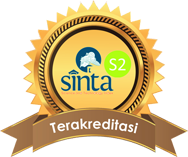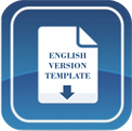EFFECTIVENESS OF STRUCTURED-WORKSHEET USE TO REDUCE STUDENT MISCONCEPTIONS IN STOICHIOMETRY
DOI:
https://doi.org/10.15575/jtk.v5i2.9873Keywords:
effectiveness, misconception, stoichiometry, structured worksheetAbstract
References
Aiken, L. R. (1985). Three Coefficients for Analyzing the Reliability of Single Items or Questionnaires. Educational and Psychological Measurement.
Aini, R. G., Ibnu, S., Budiarsih, E. (2016). Identifikasi Miskonsepsi dalam Materi Stoikiometri pada Siswa Kelas X Di SMAN 1 Malang Melalui Soal Diagnostik Three-Tier. Jurnal Pembelajaran Kimia (J-PEK) 1(2), 50-56. Retrieved from http://journal2.um.ac.id/index.php/j-pek/article/view/769
Ansori, Y. N. (2015). Pengembangan Modul Larutan Buffer Berdasarkan Persepsi Konsep Sukar dan Kesalahan Konsep dengan Model Daur Belajar 3 Fase untuk Matakuliah Kimia Dasar II. Tesis Tidak Diterbitkan. Malang: FMIPA-UM.
Ariyaldi, Putri, A. T., Khalisah, A. N., & Nurhikma. (2017). Pengaruh Penggunaan Strategi Dynamic Problem Solving Berbasis Conceptual Scaffolding untuk Meningkatkan Hasil Belajar dan Aktivitas Belajar Peserta Didik pada Materi Sifat Koligatif Larutan. Jurnal Nalar Pendidikan, 5(2), 158-164. https://doi.org/10.26858/jnp.v5i2.4875
Barke, H., Azhari, A., & Yitbarek, S. (2009). Misconceptions in Chemistry. Berlin: Springer.
Brady, J. E. (1999). Kimia Universitas: Asas dan Struktur. Jakarta: Binarupa Aksara.
Deyanti, N. P. (2008). Implementasi Model Pembelajaran Learning Cycle “5E†Berbantuan Worksheet Terstruktur untuk Meningkatkan Kemampuan Penalaran dan Komunikasi Matematika Siswa Kelas VIIIA SMP Negeri 6 Singaraja Laporan Penelitian. (Tidak Diterbitkan). Universitas Pendidikan Ganesha.
Furio, C., Azcona, R., & Guisasola, J. (2002). The Learning and Teaching of the Concepts ‘Amount of Substance’ and ‘Mole’: A Review of the Literature. Chemistry Education: Research and Practice in Europe, 3(3), 277—292. https://doi.org/10.1039/B2RP90023H
Glažar, S., & Devetak, I. (2002). Secondary School Students’ Knowledge of Stoichiometry. Acta Chimica Slovenica, 49, 43-53. Retrieved from https://www.researchgate.net/profile/Iztok_Devetak/publication/290170776_Secondary_school_students'_knowledge_of_stoichiometry/links/5759582b08ae414b8e43aa57/Secondary-school-students-knowledge-of-stoichiometry.pdf
Jusniar, Budiasih, E., Effendi, & Sutrisno. (2019). The Misconception of Stoichiometry and Its Impact on the Chemical Equilibrium. 1st International Conference on Advanced Multidiscpilinary Research (pp. 138-141). Atlantis Press.
Kelly, V., Oloyede, O. I., & Mkhumane, E. (2019). An Investigation Into Misconceptions Held by Secondary School Chemistry Student (Study in Stoichiometry and the Mole). International Journal of Biology, Physics & Matematics, 2 (1), 82 - 97.
Kind, V. (2004). Beyond Appearances: Students’ Misconceptions about Basic Chemical Ideas 2nd Edition. Amerika Serikat: School of Education Durham University Durham DH1 1TA.
Luoga, N. E., Ndunguru, P. A., & Mkoma, S. L., (2013). High School Students’ Misconceptions about Colligative Properties in Chemistry. Tanzania Journal of Natural & Applied Sciences, 4(1), 575-581. Retrieved from https://www.semanticscholar.org/paper/High-school-students%27-misconceptions-about-in-Luoga-Ndunguru/44d7a38015a3e0d54ebd3d92c6e53a29cc3b590d
Mondal, B., & Chakraborty, A. (2013). Misconceptions in Chemistry: Its Identification and Remedial Measures. Germany: LAP Lambert Academic Publishing.
Nilawati, P., Subandi, & Utomo, Y. (2016). Keefektifan Pembelajaran Interkoneksi Multipel Representasi dalam Mengurangi Kesalahan Konsep Siswa pada Materi Stoikiometri. Jurnal Pendidikan: Teori, Penelitian, dan Pengembangan, 1(11), 2076—2082. http://dx.doi.org/10.17977/jp.v1i11.7773
Prastowo, A. (2014). Pengembangan Bahan Ajar Tematik. Jakarta: Karisma Putra Utama.
Roikah, R. (2013). Identifikasi Persepsi Konsep Sukar dan Kesalahan Konsep Mol dan Tetapan Avogadro pada Siswa Kelas XI IPA SMAN 2 Malang Tahun Ajaran 2012-2013. Skripsi. Program Studi Pendidikan Kimia Jurusan Kimia FMIPA Universitas Negeri Malang.
Sunyono, Yuanita, L., & Ibrahim, M. (2015). Mental Models of Students on Stoichiometry Concept in Learning by Method Based on Multiple Representation. The Online Journal of New Horizons in Education, 5 (2), 30-45. Retrieved from http://repository.lppm.unila.ac.id/6332/
Virtayanti, I. A., Abudarin, & Wijayanti, E. (2017). Pengembangan Lembar Kerja Siswa Berorientasi Keterampilan Generik Sains Dalam Pembelajaran Kesetimbangan Kimia (Studi di SMAN 4 Palangka Raya). Prosiding Seminar Nasional Kimia dan Pendidikan Kimia, FKIP, Universitas Sebelas Maret, 22 April 2017. 92-99. Surakarta: Universitas Sebelas Maret.
Virtayanti, I. A., Abudarin, & Sadiana, I Made, (2018). Kemampuan Siswa Menemukan dan Memahami Konsep Larutan Elektrolit Menggunakan Worksheet-Induktif. Jurnal Tadris Kimiya, 3(2), 104-113. https://doi.org/10.15575/jtk.v3i2.2707
Wahyuni, E. (2010). Identifikasi Konsep Sukar dan Salah Konsep dalam Pokok Bahasan Perhitungan Kimia pada Siswa SMA Negeri 8 Malang. Skripsi. Program Studi Pendidikan Kimia Jurusan Kimia FMIPA Universitas Negeri Malang.
Downloads
Published
How to Cite
Issue
Section
Citation Check
License
Authors who publish with this journal agree to the following terms:
- Authors retain copyright and grant the journal right of first publication with the work simultaneously licensed under a Creative Commons Attribution-ShareAlike that allows others to share the work with an acknowledgement of the work's authorship and initial publication in this journal.
- Authors are able to enter into separate, additional contractual arrangements for the non-exclusive distribution of the journal's published version of the work (e.g., post it to an institutional repository or publish it in a book), with an acknowledgement of its initial publication in this journal.
- Authors are permitted and encouraged to post their work online (e.g., in institutional repositories or on their website) prior to and during the submission process, as it can lead to productive exchanges, as well as earlier and greater citation of published work (See The Effect of Open Access).








